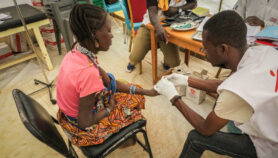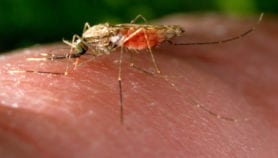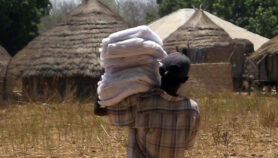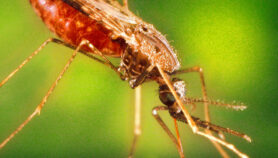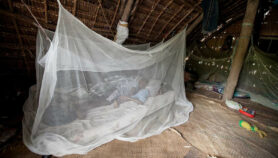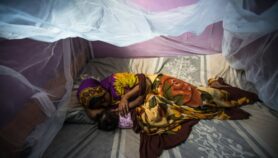By: Sanjit Bagchi
Send to a friend
The details you provide on this page will not be used to send unsolicited email, and will not be sold to a 3rd party. See privacy policy.
[KOLKATA] Last year’s tsunami in the Indian Ocean has increased the risk of malaria in India’s Andaman and Nicobar Islands by creating new mosquito breeding grounds, warned scientists last month.
The researchers, led by Kaliannagounder Krishnamoorthy of the Pondicherry-based Vector Control Research Centre, surveyed tsunami-affected areas in the islands’ Andaman district for saltwater intrusion and signs that malarial mosquitoes were breeding.
They published their findings online in Malaria Journal on 20 July.
Of the 46 habitats they surveyed, 38 were either created by the tsunami or under the influence of ongoing seawater intrusion.
The researchers found the Anopheles sundaicus mosquito, the local carrier of the malaria parasite, in 19 of the habitats surveyed.
Unlike other malarial mosquitoes, this species can lay its eggs in salt- as well as freshwater.
Krishnamoorthy’s team says rice fields and other land flooded by salty water will become major breeding grounds for the mosquito, and this will in turn increase the risk of malaria transmission.
The area is densely populated, with houses close to the flooded fields. This and the lack of cattle — which the mosquitoes might otherwise bite — could lead to more contact between people and the mosquitoes and increase the threat of a malaria outbreak, say the researchers.
Already there are indications that the risk has increased. The proportion of human blood samples infected with malaria increased nearly six-fold in the three months following the tsunami. In the Nicobar district, the proportion increased 14-fold.
“Strict vigilance is necessary to act appropriately to contain the problem,” Krishnamoorthy told SciDev.Net.
Salil Bhattacharya, an expert in epidemiology and associate professor of preventive and social medicine at Calcutta National Medical College, India, says, the Anopheles sundaicus has already caused local malaria epidemics in Kolkata and in the state of Orissa, as well as in South-East Asia.
“In general terms, malaria outbreaks are a risk in disasters where stagnant water can gather and mosquitoes can breed,” says Mukesh Kapila, director of special assignments for the Department of Health Action in Crises at the World Health Organization.
He told SciDev.Net that programmes to control malarial mosquitoes risk breaking down after a major crisis.
However, he added, “I am not aware that this happened to any significant effect because public health support was provided very quickly in most places [after the tsunami].”
Link to paper in Malaria Journal ![]()
Reference:
Malaria Journal doi:10.1186/1475-2875-4-32
Read more about tsunamis in SciDev.Net’s Tsunami update.







